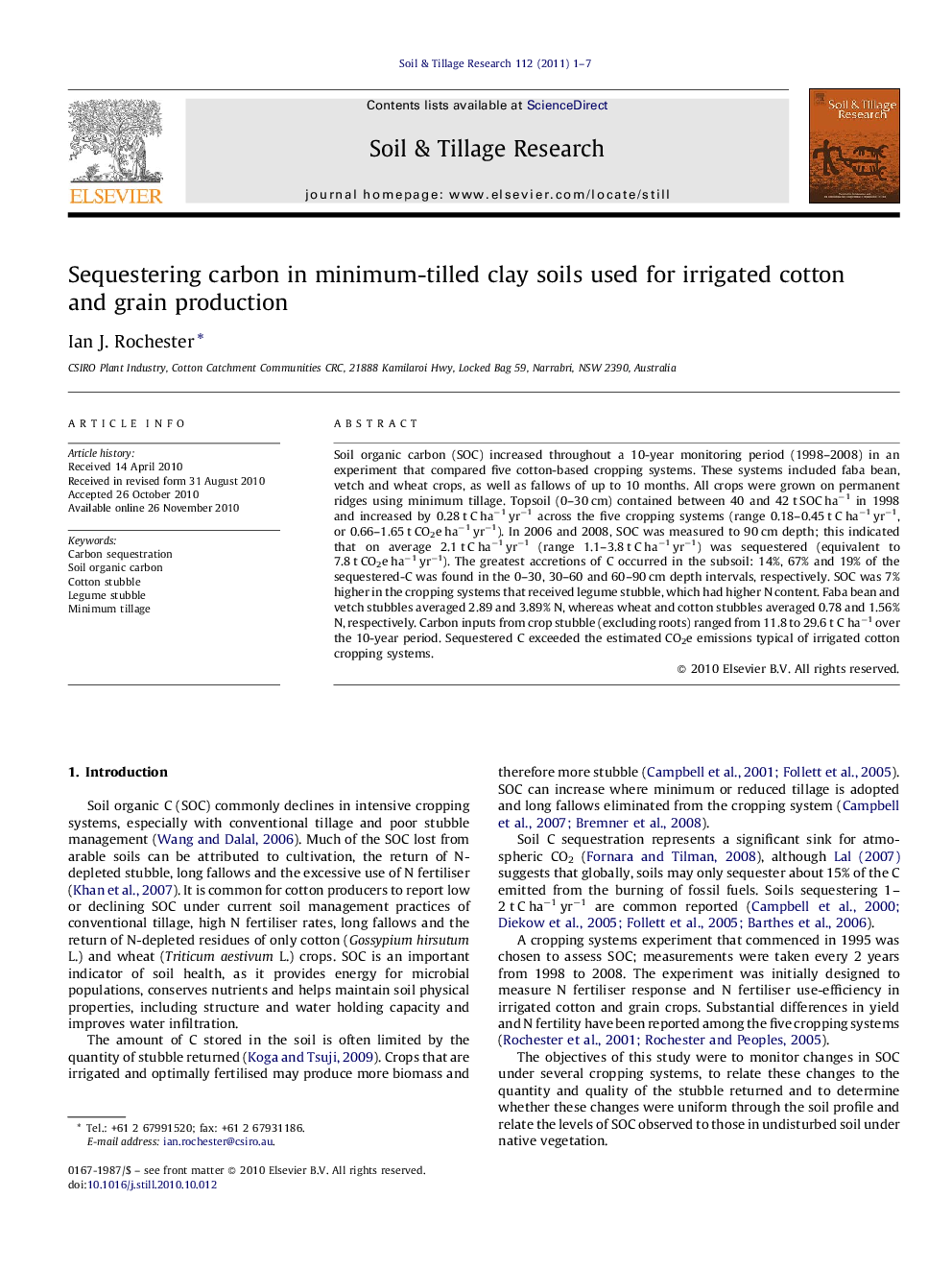| Article ID | Journal | Published Year | Pages | File Type |
|---|---|---|---|---|
| 306161 | Soil and Tillage Research | 2011 | 7 Pages |
Soil organic carbon (SOC) increased throughout a 10-year monitoring period (1998–2008) in an experiment that compared five cotton-based cropping systems. These systems included faba bean, vetch and wheat crops, as well as fallows of up to 10 months. All crops were grown on permanent ridges using minimum tillage. Topsoil (0–30 cm) contained between 40 and 42 t SOC ha−1 in 1998 and increased by 0.28 t C ha−1 yr−1 across the five cropping systems (range 0.18–0.45 t C ha−1 yr−1, or 0.66–1.65 t CO2e ha−1 yr−1). In 2006 and 2008, SOC was measured to 90 cm depth; this indicated that on average 2.1 t C ha−1 yr−1 (range 1.1–3.8 t C ha−1 yr−1) was sequestered (equivalent to 7.8 t CO2e ha−1 yr−1). The greatest accretions of C occurred in the subsoil: 14%, 67% and 19% of the sequestered-C was found in the 0–30, 30–60 and 60–90 cm depth intervals, respectively. SOC was 7% higher in the cropping systems that received legume stubble, which had higher N content. Faba bean and vetch stubbles averaged 2.89 and 3.89% N, whereas wheat and cotton stubbles averaged 0.78 and 1.56% N, respectively. Carbon inputs from crop stubble (excluding roots) ranged from 11.8 to 29.6 t C ha−1 over the 10-year period. Sequestered C exceeded the estimated CO2e emissions typical of irrigated cotton cropping systems.
Research highlights▶ Soil C increased in all cotton systems using minimum tillage. ▶ More C was sequestered in the subsoil (30–90 cm) than in the topsoil (0–30 cm). ▶ Australian high-yielding irrigated cropping systems can be highly C-positive. ▶ Soil C increased with stubble incorporation, legume crops, short fallows.
